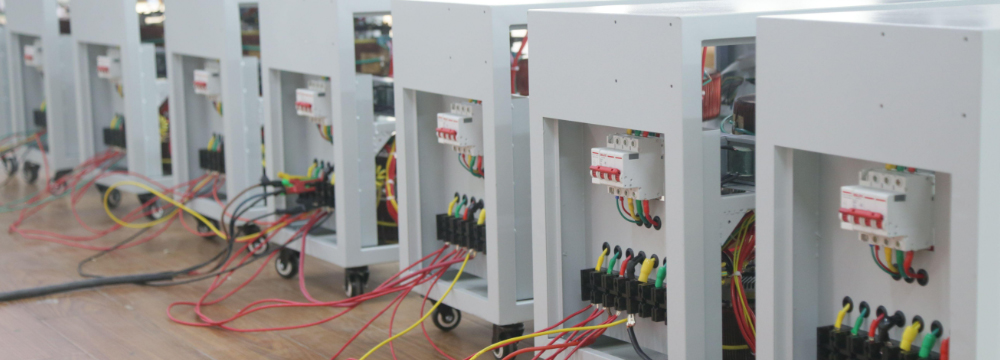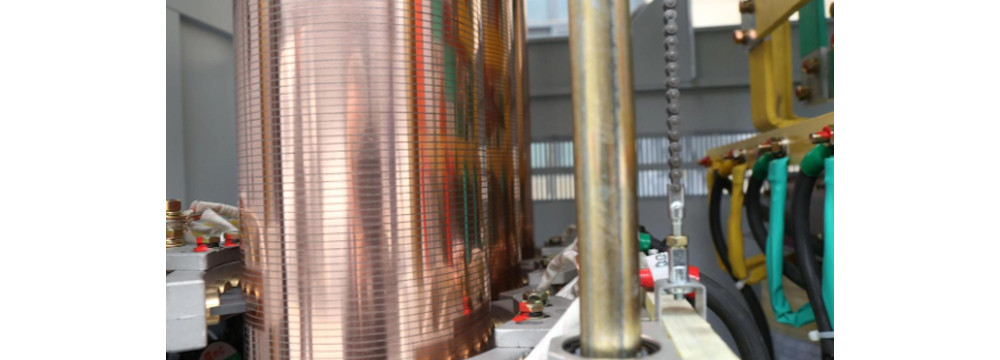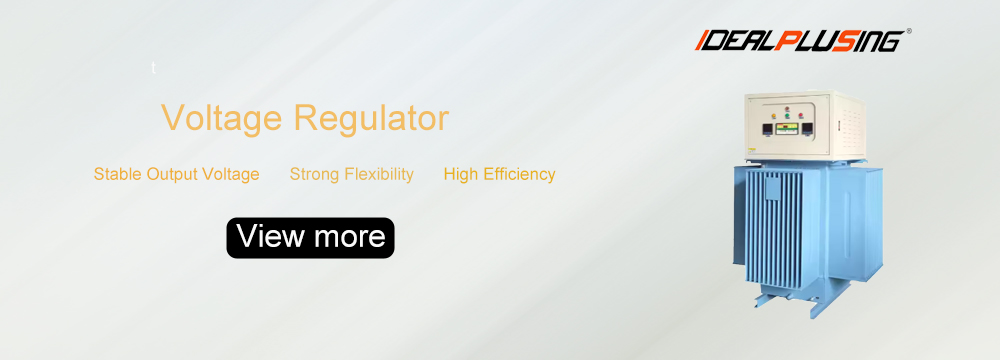In modern power systems, voltage stabilizers are key devices to ensure voltage stability and are widely used in homes, businesses, and industries. The main function of a voltage stabilizer is to automatically adjust input voltage fluctuations to ensure stable output voltage, thereby protecting electrical equipment from damage. Depending on the power supply system, voltage stabilizers are mainly divided into two types: single-phase voltage stabilizers and three-phase voltage stabilizers.
1. What is a voltage stabilizer?
A power voltage stabilizer is a power supply circuit or power supply equipment that can automatically adjust the output voltage. Its function is to stabilize the power supply voltage with large fluctuations and that is not suitable for electrical equipment within its set value range, so that various circuits or electrical equipment can work normally under the rated working voltage. Voltage stabilizers can be widely used in: electronic computers, precision machine tools, computer tomography (CT), precision instruments, test equipment, elevator lighting, imported equipment and production lines in industrial and mining enterprises, oil fields, railways, construction sites, schools, hospitals, post and telecommunications, hotels, scientific research departments, etc., where stable power supply voltage is required. It is also suitable for users at the end of low-voltage distribution networks with low or high power supply voltage and large fluctuations, and for electrical equipment with large load changes. It is especially suitable for all places with high requirements for power grid waveforms. High-power compensation power voltage stabilizers can be connected to thermal, hydraulic, and small generators.
1.1 Single-phase voltage stabilizer
The single-phase voltage stabilizer consists of a contact auto-coupling voltage regulator, a servo motor, an automatic control circuit, etc. The working principle is: when the grid voltage is unstable or the load changes, the automatic sampling control circuit sends a signal and drives the servo motor to adjust the position of the carbon brush of the auto-voltage regulator so that the output voltage is adjusted to the rated value and reaches a stable state. It has protection functions such as overvoltage, undervoltage, overload, bypass, lightning protection, and waveform distortion, reliable performance, and long-term operation. It can ensure the normal operation of electrical equipment. It is widely used in any place of electricity use and is an ideal voltage-stabilized power supply. The main difference between this voltage stabilizer and the auto-transformer is that the input point A can slide arbitrarily from 0V to 250V. In this way, the input point of the input voltage can be adjusted at any time to meet the constant output voltage. Generally, we call the input side point A the sliding arm, which is driven by the motor through the reduction device, and the direction of the motor is controlled by the voltage stabilization control circuit.
1.2 Three-phase voltage stabilizer
The three-phase voltage stabilizer is a device used to stabilize voltage.
The equipment is divided into single-phase and three-phase, and is designed and manufactured using internationally advanced compensation technology. It has the characteristics of large capacity, high efficiency, easy use and maintenance, and reliable operation. It can match any type of load and has a wide range of applications.

2. Differences between single-phase and three-phase voltage stabilizers
2.1. Structural differences
(1) Single-phase voltage stabilizer
The single-phase voltage stabilizer is mainly composed of an autotransformer, a control circuit and a relay. It has a relatively simple structure and a small size35. It is only suitable for single-phase AC power supply (such as 220V or 110V) and is usually used in low-power power consumption environments such as homes, small offices or shops.
(2) Three-phase voltage stabilizer
The three-phase voltage stabilizer is composed of three independent single-phase voltage stabilization units or three-phase autotransformers. It has a more complex structure and is larger in size and weight15. It is suitable for three-phase AC power supply (such as 380V or 400V) and is mainly used in industry, manufacturing and large commercial facilities. It can stabilize the three-phase voltage at the same time to ensure load balance.
2.2. Comparison of working principles
(1) Single-phase voltage stabilizer
The single-phase voltage stabilizer monitors the changes in input voltage and uses relays or electronic circuits to adjust the transformer tap to keep the output voltage stable. The adjustment method can be manual (manual adjustment is required) or automatic (real-time response to voltage fluctuations).
(2) Three-phase voltage stabilizer
The three-phase voltage stabilizer not only needs to stabilize the voltage of each phase, but also needs to ensure the balance between the three phases. It usually adopts automatic adjustment method, monitors the three-phase voltage in real time through the electronic control system, adjusts the transformer winding, and avoids overload or undervoltage of one phase.

2.3. Application scenarios
(1) Applicable scenarios of single-phase voltage stabilizer
Household electricity: protect household appliances such as refrigerators, air conditioners, and televisions.
Small commercial places: such as convenience stores, office lighting and cash registers.
Equipment with low power requirements: such as computers, medical monitoring instruments, etc.
(2) Applicable scenarios of three-phase voltage stabilizer
Industrial manufacturing: provide stable power for motors, large machine tools, and production lines.
Construction sites: ensure the normal operation of heavy equipment such as tower cranes and electric welders.
Data centers & large commercial buildings: such as hospitals and shopping centers, to ensure that key equipment does not shut down due to voltage fluctuations.
3. Conclusion
Single-phase and three-phase voltage stabilizers have obvious differences in structure, function and application. Single-phase voltage stabilizers are suitable for low-power, single-phase power supply environments, while three-phase voltage stabilizers are more suitable for industrial and high-power scenarios, and can provide higher stability and load balancing capabilities. When choosing, users should combine their own power needs, equipment type and budget to ensure that the most appropriate voltage stabilization solution is selected to ensure equipment safety and long-term stable operation.
Share our interesting knowledge and stories on social media













